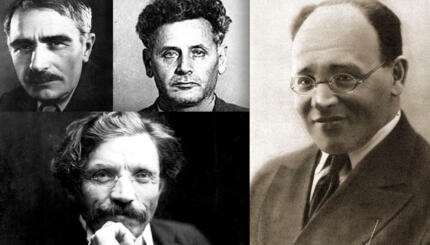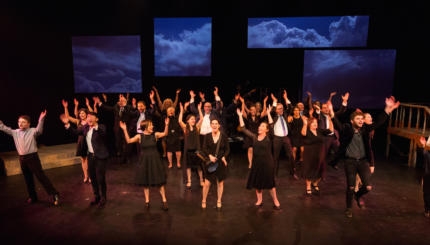Jewish American literature has chronicled and paralleled the Jewish American experience. It depicts the struggles of immigrant life, the stable yet alienated middle-class existence that followed, and finally the unique challenges of cultural acceptance: assimilation and the reawakening of tradition.
There are many works of literature that depict the life of the Jewish immigrant. The heroes of these works tend to be young men or boys who are trying to establish financial viability in the New World while fighting with the demons of traditional Jewish life and family. Abraham Cahan‘s The Rise of David Levinsky (1917) follows David from a Russian shtetl (village)–where an Easter pogrom took the life of his mother–to his ascension in America as a successful, yet emotionally devastated clothing manufacturer. Another classic work of immigrant literature, Henry Roth’s Call it Sleep (1934), was one of only two books unanimously voted to the Yiddish Book Center’s top 100 modern Jewish books. Call it Sleep uses Yiddish and butchered English to articulate the conflict between new and old cultures. It chronicles the disintegration of Jewish tradition and Jewish law. Anzia Yezierska, a Russian immigrant who worked in the New York sweatshops, was another important chronicler of immigrant life.
Bernard Malamud, Saul Bellow, and Philip Roth are the masters of Jewish American fiction. Among them they received seven National Book Awards (including six in an 18-year period), three Pulitzer Prizes (one each), and a Nobel Prize (Bellow, 1976). Malamud, Bellow, and Roth wrote about Jews rooted in America, who nonetheless suffer from alienation. Like his predecessors, some of Malamud’s main characters–like Morris Bober in The Assistant (1957)–are immigrants. However, Bober is not trying to make it in America. He has already failed. At mid-century, writers like Malamud began to analyze the problems with the American experiment.
Though Bellow is arguably the most revered Jewish American writer, his characters and themes are not overtly Jewish. Bellow, who grew up speaking Yiddish in an Orthodox Jewish home, never locates his characters in this culture. Nevertheless, figures like the Holocaust survivor Artur Sammler in Mr. Sammler’s Planet (1969) and the schlemiel Moses Herzog in Herzog (1964) navigate their existences in dialogue with their Jewish identities.

Help us keep Jewish knowledge accessible to millions of people around the world.
Your donation to My Jewish Learning fuels endless journeys of Jewish discovery. With your help, My Jewish Learning can continue to provide nonstop opportunities for learning, connection and growth.
Roth is the great chronicler of second-generation American Jewry. His characters, by and large, are the children of those Jews who worked their tails off to enter the middle class and do not intend on letting their children forget it. Roth writes about Jews who are financially comfortable yet culturally adrift. Because of their comfort, they can afford to be critical of both their Jewish and American worlds. So instead of feeling more at home in America, they feel even more alienated.
Caught in a no man’s land between the universalism of American culture and the particularism of Jewish culture, Jewish American writers have, in recent years, opted for the latter. Cynthia Ozick is the matriarch of this movement. In books like The Cannibal Galaxy (1984) and The Shawl (1989), Ozick overtly addresses Jewish themes and teachings.
However, comfort with Jewish content does not negate conflict. Contemporary writers such as Rebecca Goldstein negotiate the friction between feminism and Judaism, while writers such as Thane Rosenbaum and Melvin Bukiet discuss the unique conflicts of children of Holocaust survivors. The Holocaust has always been a dominant force in American Jewish communal identity, but only recently have writers begun to make sense of this relationship. Similarly, the relationship between American Jews and Israel–the other dominant factor in Jewish American identity–has recently been explored by writers such as Allegra Goodman and Tova Reich.
Finally, contemporary Jewish American fiction has become geographically diverse. Early works were overwhelmingly urban, set in places such as Brooklyn, the Lower East Side, and Newark. From Goodman’s Hawaii, to Steve Stern‘s Memphis, to Robert Cohen’s New Mexico, the varied settings of contemporary Jewish American literature reflect the geographical dispersion of Jewish Americans.


